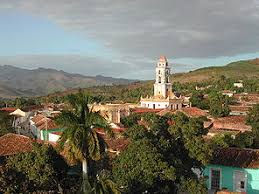Hurricane Irma’s trajectory saw the record-setting storm make landfall in Cuba on September 8th. Having already cut a swath through the Caribbean, fears that Irma would similarly devastate Cuba were well-founded. Cuba’s storm readiness was certainly tested, but its resilience was not found wanting. Hours after the storm had passed, the Cuban government sprang into action with a comprehensive response effort. The memory of Irma was soon drowned out by a chorus of hammers on nails as Cuba was rebuilt, reinforced and reinvigorated.

In this edition of the newsletter, we’ll be looking at how seven of the most popular tourist destinations in Cuba are doing, nearly two months post-Irma. With regular operations restored just in time for the winter travel season, travellers can once again enjoy Cuba’s warm water and warmer hospitality in these famous destinations.
Varadero
Originally established as a drydock around 500 years ago, Varadero has since blossomed into a bustling resort town and the jewel of the Matanzas province. You’d never know Varadero was damaged by Irma at all: the lively cabarets, authentic restaurants and storied golf course continue to serve a diverse collection of locals and tourists. Over 1 million visitors patronize Varadero’s beaches, festivals and stunning natural cave formations every year, with that number only expected to increase in the future.
Cayo Coco
With its causeway restored, this sandy paradise of flamingo colonies and scenic beaches off Cuba’s north coast is once again alive with scuba divers, kitesurfers and volleyball players. Boasting 5000 hotel rooms, Cayo Coco remains on the forefront of tourism development and invites visitors to enjoy its contrast of undisturbed wilderness and world-class comfort.
Cayo Santa Maria
A coastal key in the province of Villa Clara, Cayo Santa Maria also had its causeway repaired after Irma. When the furious tide receded, authorities also found a nice surprise: the stunning 13 km beaches had more white-sand and dunes than ever. With airports now open, tourists can experience the vibrant handicrafts market and visit the sea lions at Acuario Delfinario Cayo Santa María at their leisure.
Havana
Havana’s seawall bore the brunt of Irma’s anger, leaving much of the Cuban capital and its tourism facilities untouched. The city’s colourful colonial buildings remain as striking as ever and the sounds of wild Salsa dancing still punctuate the cool night air. Whether you want to take in Cuba’s history at one of the many museums or galleries or just cruise along the seaside Malecón at twilight, Havana is ready and able to welcome all visitors.
Holguín
Organized around the sprawling central park of Parque Calixto García, the eastern city of Holguín emerged from Irma with only minor property damage. Now fully repaired, Holguín’s many monuments to the heroes of Cuban history offer a glimpse into the cultural fabric of the nation. With beautiful cafes and cathedrals and proximity to many luxurious resorts, Holguín offers a unique mix of history and hospitality that affirms its position as one of Cuba’s top destinations.
Santiago de Cuba
Much like its stalwart 17th century fortress of Castillo del Morro, Santiago de Cuba remained unbowed by the winds of Irma. The capital of a southeastern province with which it shares its name, Santiago de Cuba has strong Afro-Cuban influences that materialize in the city’s street parades and summer Carnavals. The nearby Turquino National Park provides the perfect locale for a hiking expedition if you need a change of scenery from the city’s striking Spanish architecture.
Camaguey
Inhabitants of Camaguey are known to other Cubans as “agramontinos”—after the hero Ignacio Agramonte—in recognition of their resilience. With this pedigree in mind, it is no surprise that Irma failed to conquer Cuba’s third largest city. A maze of pastel alleys and side-streets broken up by churches and galleries, Camaguey is where enduring art and faith meets a dynamic social fabric. The city’s many plazas provide a respite from a day of exploring the labyrinth of roads and often feature sculptures from Cuba’s greatest artists.

Comentarios